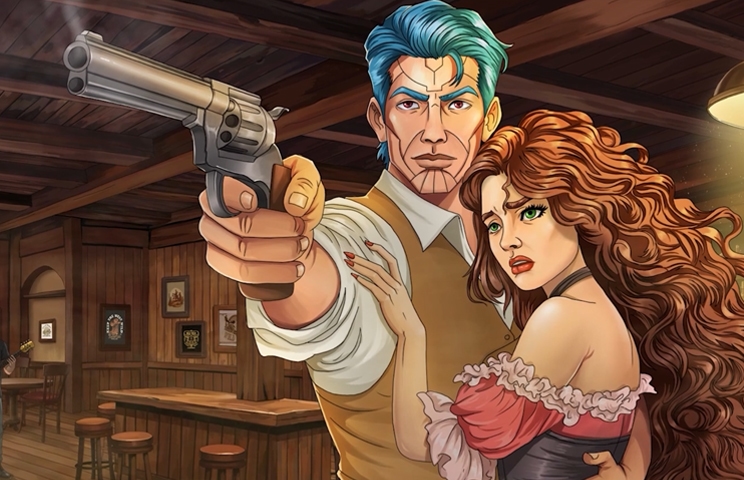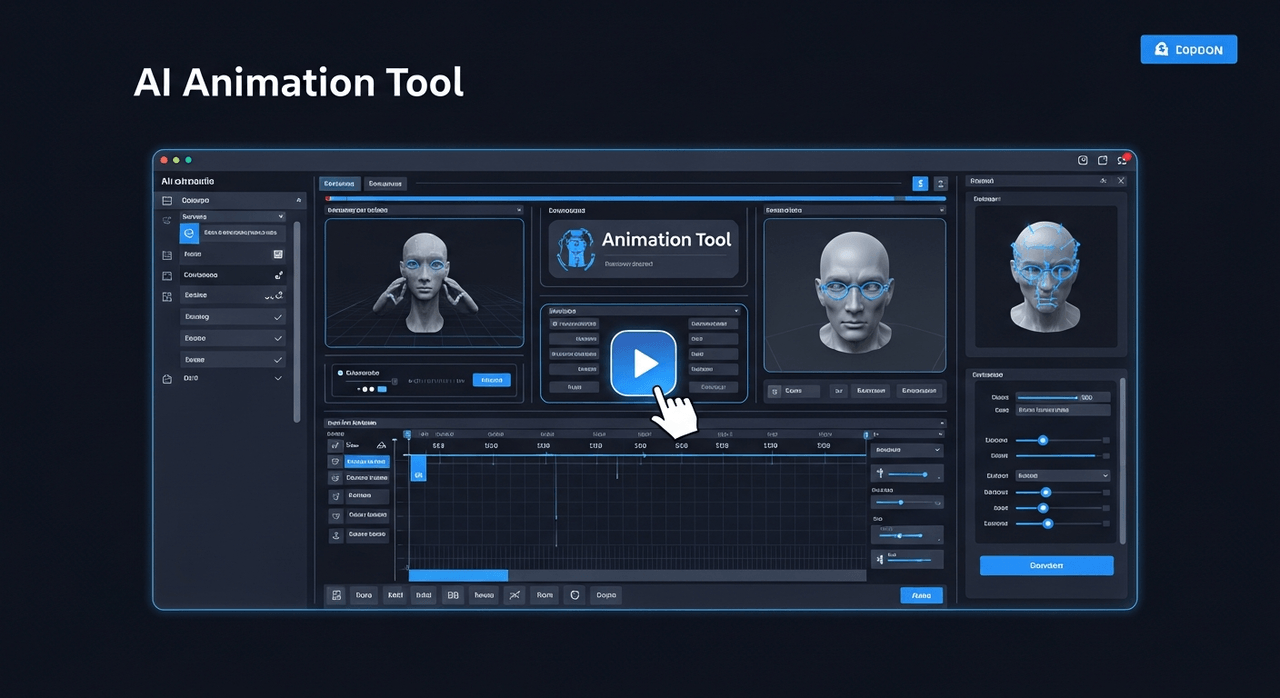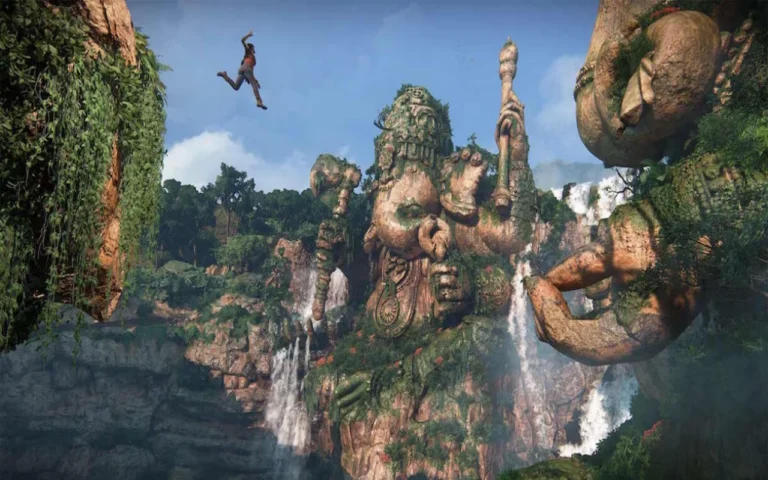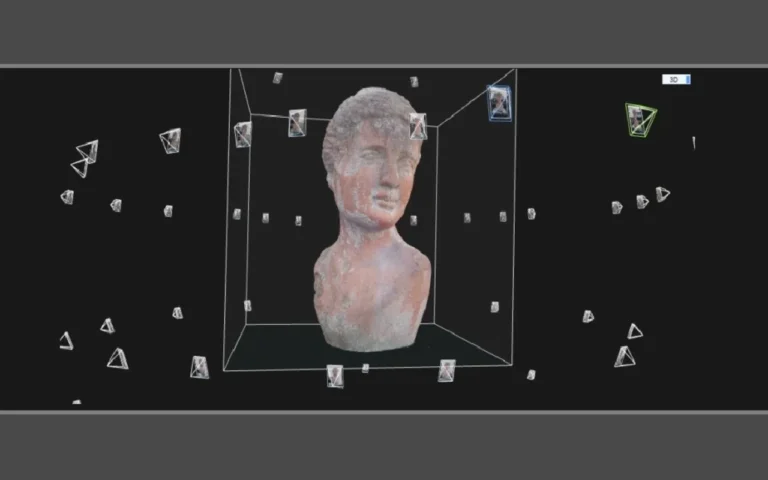In today’s crowded gaming scene, a trailer does a lot more than just tease a new release—it often makes the very first impression. For many players, that short clip is their first peek into what a game feels like, how it looks, and why they should care. It’s where excitement starts to build, opinions begin to form, and expectations take shape—long before the game even launches.
Whether the trailer leans into dramatic cinematic scenes or shows off real gameplay, it’s a mix of storytelling and smart planning. Game production companies that really understand its power don’t treat it as just another marketing piece. Game trailer production is all about building buzz, giving the game a voice, and most importantly, turning curiosity into real interest. For these reasons, the cost of game trailers is completely worth it and should be considered an essential investment in a game’s marketing strategy, as they significantly increase visibility, player engagement, and ultimately, sales.
- How Game Trailers Influence Player Expectations and Sales
- The Psychology Behind a Great Game Trailer
- The Role of Emotional Storytelling in Game Marketing
- Common Mistakes in Game Trailers
- How to Measure a Trailer’s Impact
- Cinematic vs. Gameplay Trailers
- Examples of the Most Successful Game Trailers

Need Animation Services?
Visit our Animation Service page to see how we can help bring your ideas to life!
How Game Trailers Influence Player Expectations and Sales
Game trailers carry real weight in how a title is received. They blend visuals, sound, story hints, and gameplay mechanics into a tightly edited package that helps players decide if a game is worth their time—and money.
When done well, a memorable game trailer can:
- Generate buzz in fan communities and gaming media
- Drive traffic to wishlists, newsletters, and store pages
- Increase pre-orders and early access sign-ups
- Help the game stand out during a crowded release window
But the trailer has to be honest. Over-promising or misleading audiences can do real damage. Just look at what happened with Cyberpunk 2077: years of cinematic hype built sky-high expectations, but the early version of the game didn’t deliver on that promise. The result? Frustration, backlash, and a loss of consumer trust.
The Psychology Behind a Great Game Trailer
Ever had a trailer live rent-free in your head for weeks? That’s no accident. The real magic isn’t in the 4K graphics or orchestral swells—it’s in how they mess with your subconscious. The best game trailers play with your emotions like a pro gamer plays a controller: knowing exactly which buttons to press and when.
The masters don’t just show you cool shit—they make you need it. Here’s how they hack your brain:
- Emotion: Whether it’s excitement, fear, joy, or sadness, trailers that stir emotions stick with viewers.
- Mystery: Teasing just enough of the story to make you want more is far more effective than laying it all out.
- Visual fluency: Smooth editing, consistent style, and strong imagery keep people engaged without overwhelming them.
Gears of War’s “Mad World” trailer is an example of a good game trailer. Unlike other game trailers, It didn’t include explosions and non-stop action. Instead, it slowed everything down. That haunting music and heavy atmosphere influenced people deeply, highlighting the importance of storytelling in animated content. It wasn’t just another shooter—it felt like there was something deeper going on, and that’s exactly why it stuck with people.
The Role of Emotional Storytelling in Game Marketing
Today’s players don’t just want eye candy – they want to be emotionally involved. A trailer that delivers a powerful emotional impact—whether through bittersweet nostalgia, genuine humor, or moments of heartbreak—is what truly leaves a lasting impression. That’s what turns “just another game” into something that matters.
The reveal trailer of The Last of Us Part II is a good example of emotional storytelling. The trailer didn’t lead with combat or big set pieces. It focused on raw feelings—grief, love, and revenge. That emotional weight drew people in, even those who hadn’t played the first game. You could tell it was about more than just surviving.
Even upbeat games can benefit from this. A little well-placed music, a familiar reference, or a funny twist can turn a decent trailer into one that gets shared a thousand times.
Common Mistakes in Game Trailers (and How to Avoid Them)
Of course, not all trailers land. Some show too much. Some feel disconnected from the actual game. Others are just… forgettable. And that’s a problem—because a weak trailer can leave players confused or totally uninterested.
The key is to be clear about what the game is, what game genres it fits into, stay true to its tone, and leave just enough mystery to get people curious. First impressions matter—and in the world of games, a trailer is often your one shot to make it count.
Only Showing Cinematics, No Gameplay
Cinematic trailers are exciting, but if they’re not backed up by gameplay footage, players might feel misled. Gamers want to see what the actual experience looks like—controls, movement, UI, and more. A good balance between cinematic style and gameplay clarity builds trust.
Spoiling Key Moments
Trailers shouldn’t give away major story beats or plot twists. Let players discover those during gameplay. Reveal too much, and you risk dulling the emotional impact.
Tone-Deaf Trailers
Nothing kills anticipation quicker than a trailer that promises something but delivers something else. For instance, having a dark, ominous teaser for a game that ultimately is a slapstick comedy can mislead the players. The tone of the trailer must be consistent with the game’s actual content, as audiences expect coherence between the two.
Kitchen-Sink Syndrome
Stuffing every feature, character, and set piece into one trailer just leaves players overwhelmed. It’s way better to pick one thing and nail it—world-building, combat, or a killer protagonist—than to drown them in noise.
Editing Whiplash
A trailer that’s all frantic cuts with no pause can be very exhausting for the audience. A good game trailer plays like a song—build-up, payoff, and a knockout finish. If your trailer feels like a strobe light, dial it back. To avoid this problem, make sure to prepare a strategy before starting your work .
Ask yourself: is this trailer supposed to inform, build hype, or drive pre-orders? That answer should guide every creative choice.
How to Measure a Trailer’s Impact
Once the trailer is published, it’s time to track how it’s doing. Don’t just look at views—dig deeper.
Here’s what really matters:
- Engagement: Look at likes, comments, how long people watch, and how often they share it.
- Click-through rates: Are people going from the trailer to your store page or website?
- Pre-order or wishlist spikes: If numbers jump after a trailer drops, that’s a strong signal.
- Community sentiment: Scan forums, social media, and YouTube comments. Are people hyped, confused, or disappointed?
- Press mentions: A trailer that gets picked up by media outlets or YouTubers has earned some valuable exposure.
These insights help you understand what’s working and what needs tweaking—so your next trailer lands even better.
Cinematic vs. Gameplay Trailers: Why the Difference Matters
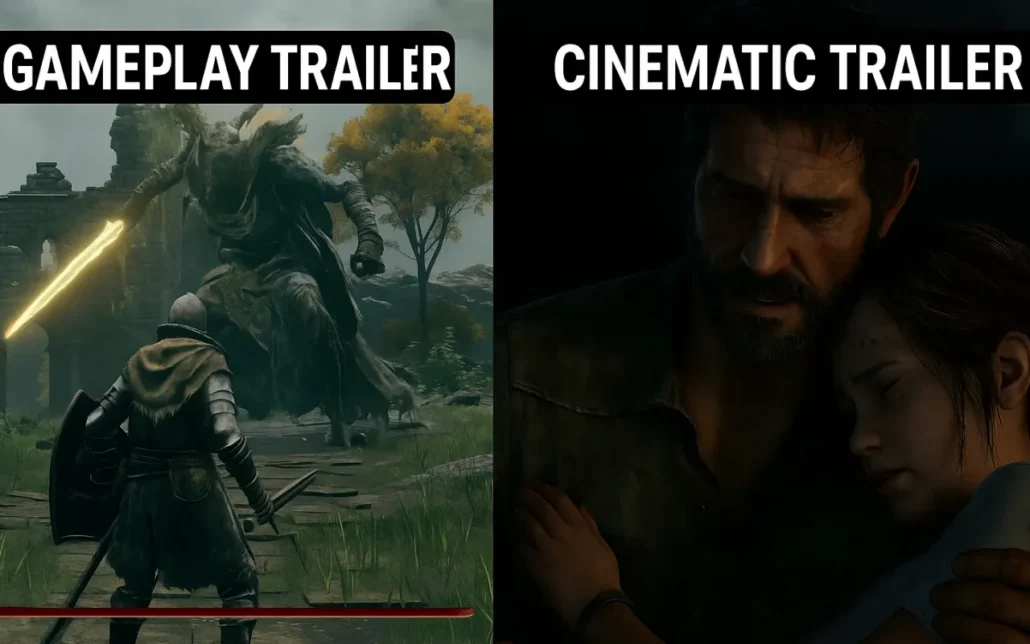
Cinematic and gameplay trailers each serve a purpose—and knowing when to use them is key. Cinematic trailers are stylized, dramatic, and perfect for building early hype. They’re often used during big announcements to set the tone and show off a world or character.
Gameplay trailers are the real deal. They show exactly what playing the game feels like—controls, mechanics, visuals and game art in action. These are essential when players are deciding whether to purchase the game or not.
The best campaigns use both. Take Starfield, for example. After teasing fans with cinematic reveals, Bethesda eventually released a detailed gameplay breakdown that reassured fans and reset expectations.
Examples of the Most Successful Game Trailers
Some trailers go beyond promotion—they become part of gaming history. They set the standard for what a trailer can do and are still talked about years later.
The best game trailers of all time usually share one or more of the following features:
- A unique emotional angle
- Honest representation of gameplay
- Bold creative direction
- A perfect pairing of music and visuals
From Dead Island’s haunting reverse-time trailer to Red Dead Redemption’s unforgettable atmosphere, these trailers didn’t just showcase games—they defined them.
Gears of War – “Mad World” Trailer
Remember when Gears of War completely rewrote the rules with that “Mad World” trailer? At a time when every shooter trailer was all explosions and bullet storms, they dared to slow things down. Just that aching piano melody, Gary Jules’ broken voice singing “Mad World,” and these haunting shots of a battlefield where the real story wasn’t the violence – it was what the violence left behind.
That trailer didn’t just show us a game – it made us feel the cost of war. The way the music swelled as we saw that giant alien worm crashing through ruins, or the quiet moment of a soldier’s helmet rolling through rubble—those were the details that stayed with us long after the trailer ended, capturing both the scale and the emotion of the story in just a few seconds.
This game trailer changed what game marketing could be overnight. The trailer is not just selling power fantasies, but making players wonder: What would I sacrifice to survive a war like this? That’s why, nearly twenty years later, we’re still talking about it.
Halo 3 – “Believe” Campaign
The Halo 3 “Believe” campaign is widely considered a high watermark in game marketing. Instead of showing gameplay or even CG characters, it used a meticulously crafted diorama—a frozen snapshot of battle—to tell a story.
As the camera weaved through miniature soldiers and chaotic scenes, an orchestral score swelled with emotion. It wasn’t just promoting a game—it was memorializing a legend. Master Chief was portrayed less like a player avatar and more like a mythic hero. The outcome was a trailer that gave people goosebumps and made Halo 3 feel like a cultural moment, not just a game release.
Dead Island – Reverse Trailer
Dead Island’s reveal trailer made waves for its storytelling technique. Told in reverse, it traced the tragic death of a child during a zombie outbreak, rewinding through the chaos to a fleeting moment of peace. It was raw, surprising, and unforgettable.
While the game itself turned out to be much lighter in tone, that trailer instantly propelled the title into the spotlight. It’s a great example of how emotional storytelling—even if not fully aligned with gameplay—can generate buzz and elevate a game’s visibility overnight.
The Last of Us Part II – Reveal Trailer
Naughty Dog played it differently with The Last of Us Part II’s reveal. No bombastic action, no flashy edits—just Ellie in a blood-spattered room, fingers picking at guitar strings, her voice raw over lingering shots of the wreckage around her. No explosions, no quick cuts—just quiet dread pooling in every frame.
That deliberate hush wasn’t just there to match the game’s tone—it made us resonate with the story on a deeper level. Fans dissected every second because it encouraged them to lean in close. This game trailer proves that sometimes, the loudest statements come whispered.
Cyberpunk 2077 – Reveal Trailer
That first Cyberpunk 2077 reveal was an absolute lightning in a bottle. The trailer didn’t include any tedious explanations—just a sudden plunge into Night City’s neon hellscape. Every frame oozed style: the glint of chrome augmentations, the flicker of holographic ads, the way the city’s glamour barely covered its rotting core.
The trailer didn’t involve any game trailers. It wasn’t about showcasing mechanics—it was about creating a mood that stuck around. CDPR didn’t just announce a game—they created a cultural moment that had everyone from gamers to tech enthusiasts losing their minds.
Starfield – Gameplay Reveal
After years of vague teases, Starfield’s gameplay trailer finally gave fans something solid. Instead of cinematic fluff, it delivered a straight-up look at core systems—exploration, character creation, space travel, and more.
The shift from mystery to transparency was exactly what players needed. It managed expectations, answered questions, and reestablished trust. In a landscape full of over-promises, this grounded approach felt refreshingly honest.
Red Dead Redemption 2 Trailer
Rockstar didn’t just drop a game trailer – they gave us something to remember. Like some grizzled campfire storyteller, they let that Western world unfold one painstaking frame at a time. No rush. No cheap thrills.
Just the creak of leather, the whistle of wind through canyon rocks, and the slow promise of a story that’d gut you when you least expected it. That’s how you sell a game – by making players feel the dust in their teeth before they ever push start.
That first trailer? No flashy action, no rapid cuts—just haunting vistas, the creak of a saddle, and the distant howl of a wolf. It wasn’t selling gunslinging; it was selling a world, a feeling. The first trailer was then followed by other trailers, each peeling back another layer—character close-ups, snippets of dialogue, glimpses of chaos lurking beneath the frontier’s quiet surface.
By the time the final trailers were released, they weren’t just promoting a simple game; they were confirming what fans already felt: that this wasn’t just a game, but an era, a myth, something you could almost smell and taste. That’s the power of a trailer done right. It’s not about dumping information—it’s about making every frame, every second of silence, feel like a promise.
And Rockstar? They didn’t just make empty promises. As release day approached, later trailers unpacked gameplay mechanics, character interactions, and narrative arcs. This slow-drip approach built anticipation without overexposing the game. It gave players room to imagine, speculate, and stay engaged through a perfectly paced marketing rollout.
GTA VI Trailer
The GTA VI trailers, especially the first one in December 2023 and the second one in early 2025, caused unprecedented hype all over the globe of gaming. In its return to a reimagined Vice City, interactive characters, and extremely refined, story-driven visuals, Rockstar capitalized on over a decade of fan anticipation.
The cinematic feel, social media-influenced scenes, and emotionally charged scenes led to both trailers being viewed as cultural phenomena. This meticulously crafted build-up not only generated anticipation but also showed how narrative and psychological involvement in trailers can lead the way for the industry and influence consumer habits.
Final Thoughts
A game trailer isn’t just a sneak peek—it’s the first handshake, the opening line of a conversation between a game and its players. By doing it right, you don’t just show off cool visuals—you pull people in, make them feel something, and turn curiosity into anticipation.
For devs and marketers, trailers are where art meets commerce: a chance to tell a story while also making a smart business play. Every second counts—the music, the cuts, the way tension builds or action explodes.
It’s psychology, gut instinct, and cold, hard data all working together. In an industry where everyone’s fighting for attention, a killer trailer isn’t just helpful—it’s essential. Get it right, and you don’t just announce a game; you’re creating demand.
